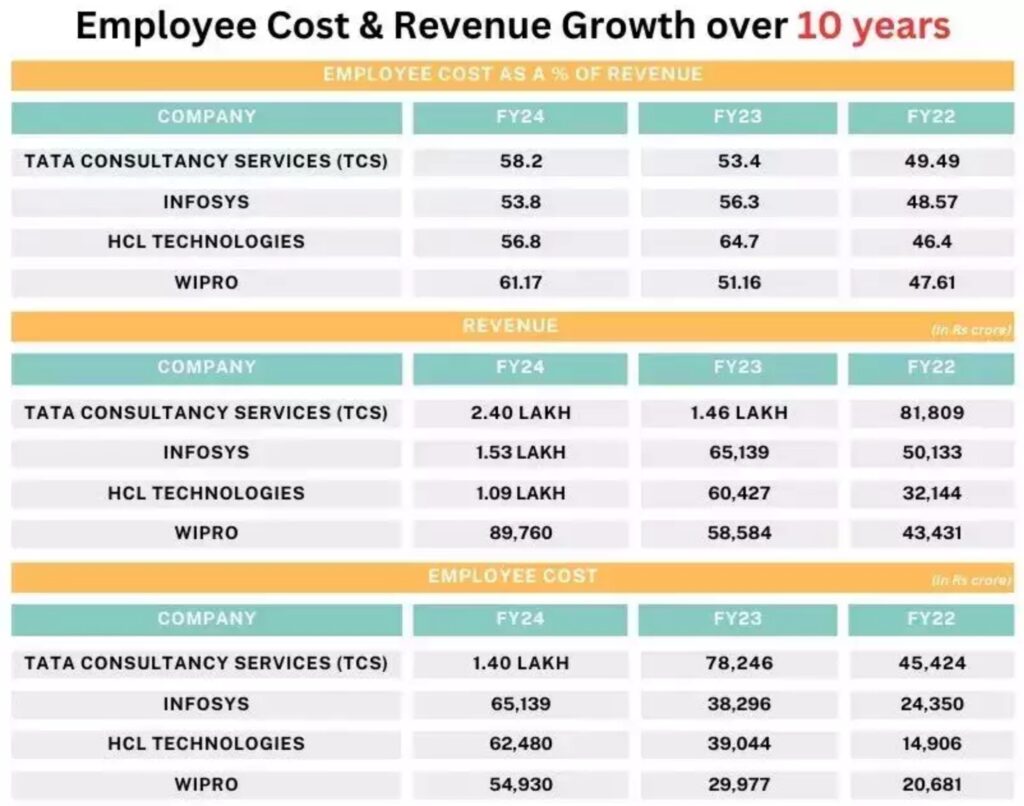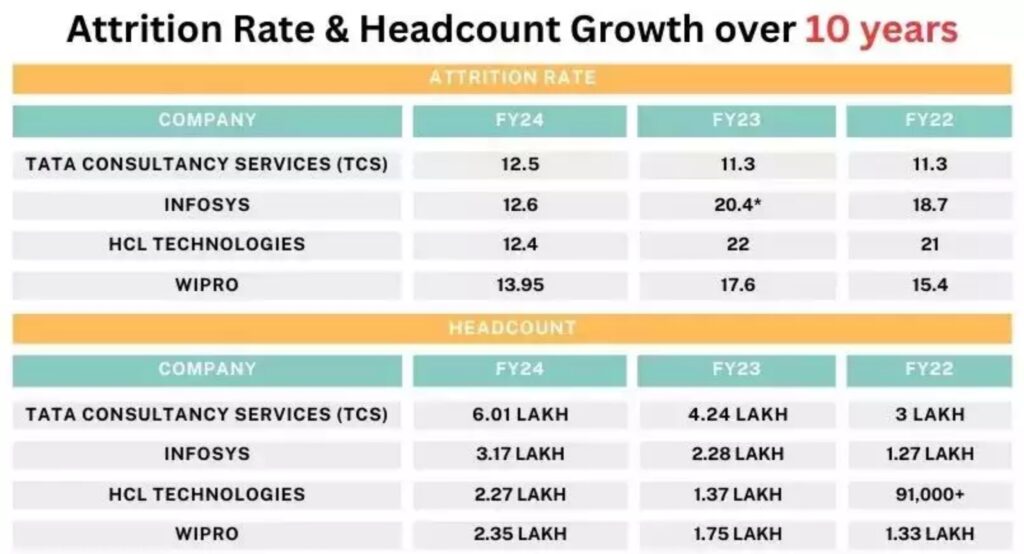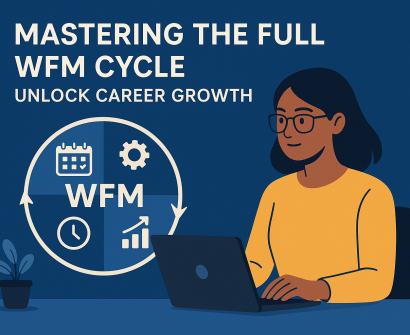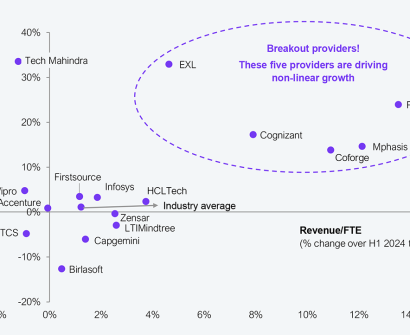Currently Empty: $0
IT giants skyrocket revenue but soaring employee costs spell trouble

Though IT giants have increased their revenue by 185 percent in the last decade, the overall employee cost also jumped by 206 percent, according to 10-year data from annual reports analyzed by ETHRWorld.
The top four information technology (IT) players in India by market capitalization have collectively achieved nearly a threefold revenue increase, registering a staggering 187 percent rise between FY2014 and FY2024, according to 10-year data from annual reports analyzed by ETHRWorld.”
This revenue surge was underpinned by a 112 percent increase in workforce numbers, growing from 6.5 lakh employees in FY14 to 13.82 lakh in FY24. However, this expansion has come at a significant financial cost. Employee expenses have soared by 206 percent during the same period, reflecting the growing compensation demands and capacity-building efforts required to sustain the sector’s momentum, as per ETHRWorld research.
In terms of headcount, among the four – TATA Consultancy Services (TCS), Infosys, HCL Technologies, and Wipro – Infosys saw the highest jump of 149 percent, from 1.27 lakh in FY14 to 3.17 lakh in FY24. The lowest growth of 76 percent was seen in Wipro, from 1.33 lakh in FY14 to 2.35 lakh in FY24.
It is interesting to note that while the average employee cost jumped from Rs 1.05 lakh crore in FY14 to Rs 1.85 lakh crore in FY19, a 76 percent increase, the metric saw an almost similar rise (74 percent) to Rs 3.22 lakh crore in FY24 despite the much- increased revenue.

Overall, the average employee cost as a percentage of revenue has shot up from 48 percent in FY14 to 57 percent in FY24.
All four companies have strived to keep employee cost as a percentage of revenue between 50 and 60 percent, barring a few exceptional periods. For instance, HCL Tech shot its employee cost revenue from 46.4 in FY14 to 64.7 in FY19.
“The increase in employee cost is primarily on account of an increase in number of employees (137,965 in fiscal 2019 as compared to 120,081 in fiscal 2018) and an increase in the average cost per employee due to normal salary revisions,” the company said in its annual report.
Similarly, Wipro recorded 61.17 percent in FY14, a substantial increase from 45.55 percent in FY24. This is despite the fact that the company saw the lowest headcount growth.
“Given the rate of attrition that has been seen in the past few years, instead of hiring aggressively, the company [Wipro] may have focused on retaining key talent and managing attrition. Also, Wipro has been prioritizing employee m productivity and utilization, ensuring existing employees are fully engaged before hiring new talent. Wipro seems to be taking a m cautious approach to hiring, focusing on optimizing its current workforce rather than aggressively expanding,” Neeti Sharma, CEO of TeamLease Digital, told ETHRWorld.

Meanwhile, Infosys reported the lowest numbers in FY24 at 53.8 and the lowest growth of just five percent in the last 10 years. Infosys, in FY14, highlighted that the IT services industry has employee cost as its biggest component, comprising about 70-80 percent of the total operating cost.
“Hence, it is important to deploy different mechanisms to optimize this large component of operating cost. There are several levers available for cost optimization that can be used to bring down employee costs without causing friction to the business. These include increasing employee productivity so that higher revenue is generated at the same cost, increasing the offshore component of a project, improving the utilization percentage, reducing the overheads in a project through a broad-based employee pyramid structure, optimizing business support functions through process improvements and automation of workflows,” Infosys had mentioned in its annual report.
ETHRWorld reached out to all four IT bellwethers, however, none of them responded till the time the article was published.
“Employee costs as a percentage of revenue has remained in the 50-55 percentage range over the decade. This as an efficiency measure of input cost-to-output ratio, has remained largely constant in the industry. The linearity is evident with higher revenues being driven by deploying larger teams on higher compensation spends. For every 1 rupee spent on talent cost, the revenue return has remained stagnant at 1.7 to 1.9 rupee over the decade,” Prasadh M S, Head of Workforce Research & Communication, told ETHRWorld.
Looking at the 10-year trend, there’s in fact a marginal drop in cost efficiency over the last 5 fiscals owing to higher talent costs amidst a slower revenue trajectory, he added.
Stable attrition but productivity loss?
Despite much disruption in its IT services industry in the recent past, private companies have managed to keep their average attrition level at around 12 percent, a much-improved figure of around 16 percent in FY14.
A notable mention is of HCL Technologies which brought down its attrition rate from 22 percent in FY19 to 12.4 percent in FY24. A similar trend was seen at Infosys which minimized its attrition from 18.7 percent in FY14 to 12.6 percent in FY24. Its l annual report for FY19 does not mention the attrition rate, however, the IT firm reported an attrition rate of 20.4 in Q4 FY19.

Among all, TCS stood strong by maintaining its attrition rate across 10 years with only minor fluctuations, 11.3 percent in FY14, 11.3 percent in FY19, and 12.5 percent in FY24.
Experts have raised concerns about the few exceptions such as HCL Technologies who managed to bring down attrition rates as well as their employee cost per revenue.
“HCL Technologies saw its employee costs spike to nearly 65 percent of revenue just a few years ago before clawing back to 56 percent. This tug- of-war between cost control and productivity raises a critical question: How much strain are employees under in this relentless pursuit of cost efficiency? Is this sustainable—or just a ticking time bomb?” said a veteran CFO based in Mumbai.
Reflecting on the overall trend, Prasadh highlighted that the people- cost-to-revenue productivity ratio has remained largely flat, despite the sector’s spend on digitalization, AI, and automation initiatives over the decade.
“Efficiencies brought in by these interventions are not yet externally visible through a significant rise or spike in per capita productivity or output per unit of talent cost. AI and Automation spending, will and should eventually drive a drop in people costs as a percentage of revenue. This change would push the stagnant cost-to-revenue ratios to move up to the 1:2 or 1:2.5 range. The IT services sector and its players may be on the pathway to achieve this, but current data points to a longer runway to hit the mark,” he said.
The data underscores a crucial industry insight: growth in IT services hinges not only on capacity creation but also on the rising cost of talent acquisition and retention. As the sector continues to expand, balancing headcount increases with cost efficiencies will remain a key strategic challenge for industry leaders.
Source: GWFM Research & Study








